Maverick car designer Chris Bangle on China’s electric answer to megacity commuting
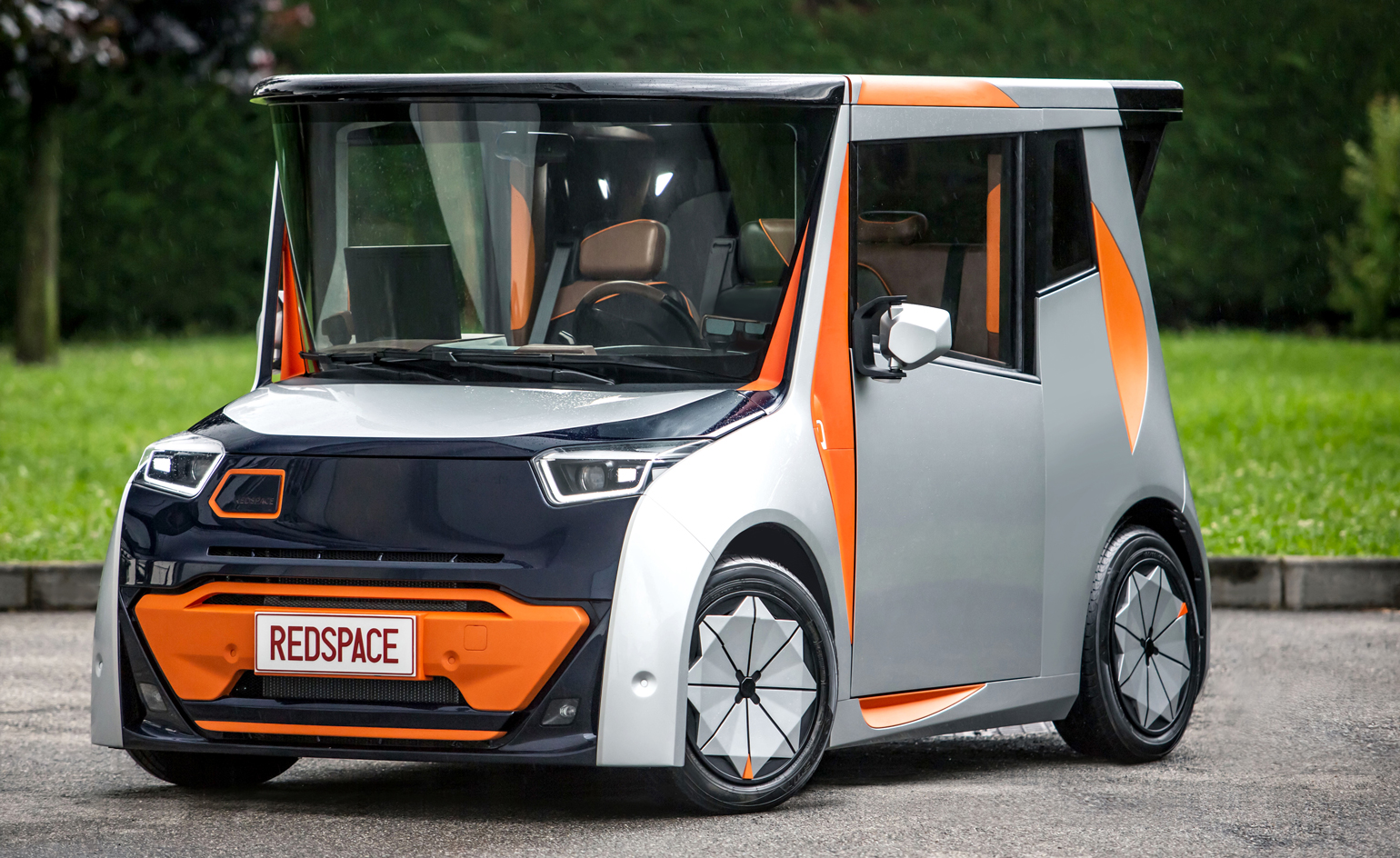
REDS is a compact electric car for commuting in China’s megacities. It purposely looks a touch oddball, for the creative team want to disrupt the traditional rules of vehicle design. But this is much more than a speculative research project. When the car goes into production in a couple of years, it will be the first of a series of clean-powered products from REDSPACE, a new electric car marque by the state-owned China Hi-Tech Group Corporation, a leading maker of textile machinery, electric buses and trucks.
Chris Bangle is to be the creative lead. ‘CHTC has the know-how and a serious approach,’ he explains from his vehicle design consultancy Chris Bangle Associates (CBA) near Turin, ‘it had carried out a great deal of research and came to us with a very specific brief.’ Bangle’s team conceptualised a car that would target three main customer groups in urban China. REDS was to be a second vehicle for a new family, a run-around for young adults with no emotional attachment to the motor car, and a flexible space for entrepreneurs to use as a mobile office.
CBA’s approach was to come up with what Bangle refers to as the ‘fourth space’. He explains: ‘Imagine if the first space is the home, the second work, the third a public space like Starbucks, then the fourth space is dedicated to you.’ This is a physical space to retreat to, meet with friends, read, perhaps take a nap. The fourth space is a transformative place, where, he feels, you can also change versions of yourself. ‘We set out to make this conceptual space physical.’
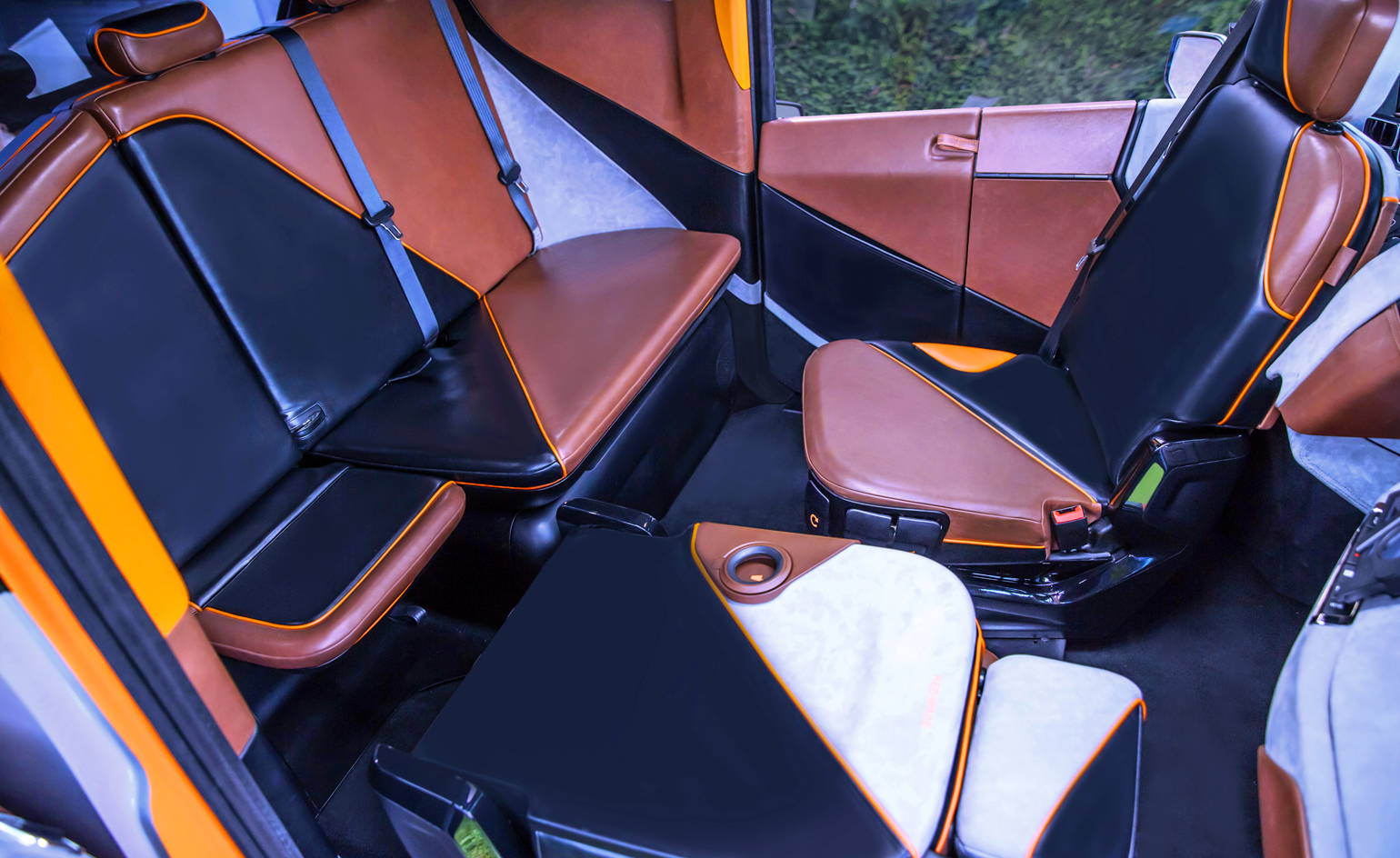
Bangle is best known for his time at BMW. A polarising designer, he was instrumental in shaking things up at the conservative Bavarian company and introducing novel design quirks that many other carmakers subsequently adopted. He went as far as to create the personality-changing BMW GINA Concept, a car swathed in shape-changing cloth bodywork, before abruptly leaving almost a decade ago to set up his own consultancy in Italy.
It is therefore no surprise that his REDS proposal is conceptually radical. ‘We needed to take an entirely different approach from traditional car design.’ He elaborates, ‘cars are driven only 10 percent of the time, so we decided if we were aiming at a crowd interested in the fourth space, then the 90 percent had to be the focus of our design.’
To answer the needs of the customer groups identified by CHTC, this is a car designed for many lives; a practical urban run-around, a fun entertainment hub, and a functional mobile office. When stationary, the driver’s seat rotates to face other passengers and the space can be configured to suit the given situation, including the option of a drop-down table to make this into a bijou office. The car will offer advanced driver assist technology with talks of cordless charging being available too, plus the expansive roof will feature a solar panel to harness energy.
REDS is essentially formed around the interior functionality of the car. ‘In the first two research years, we made wooden seating models where we sat, turned and moved around. During this time three of the team had their first babies and this really shaped our thinking,’ recalls Bangle. ‘It helped us appreciate how real people in real-world scenarios want to live in their cars.’
This is a sub-3m car – just a touch longer than the tiny Smart Fortwo. But imaginative interior layout allows room for four adults and enough luggage space for one or two travel bags. Bangle explains: ‘The wide sliding doors and open seating let you walk in and out of the car without having to climb over each other. The driver is on the left but they, and passenger, sit asymmetrically.’
Off-setting the seats also allows for generous legroom for all passengers and the ‘love seat’ bench at the rear creates the space for a little luggage compartment that also offers a handy fold-down seat area to tie your shoelaces, change nappies – that sort of thing. What’s more, the driver’s eye-height is positioned at the same level as an SUV to avoid feeling intimidated in a tiny car in a big city.
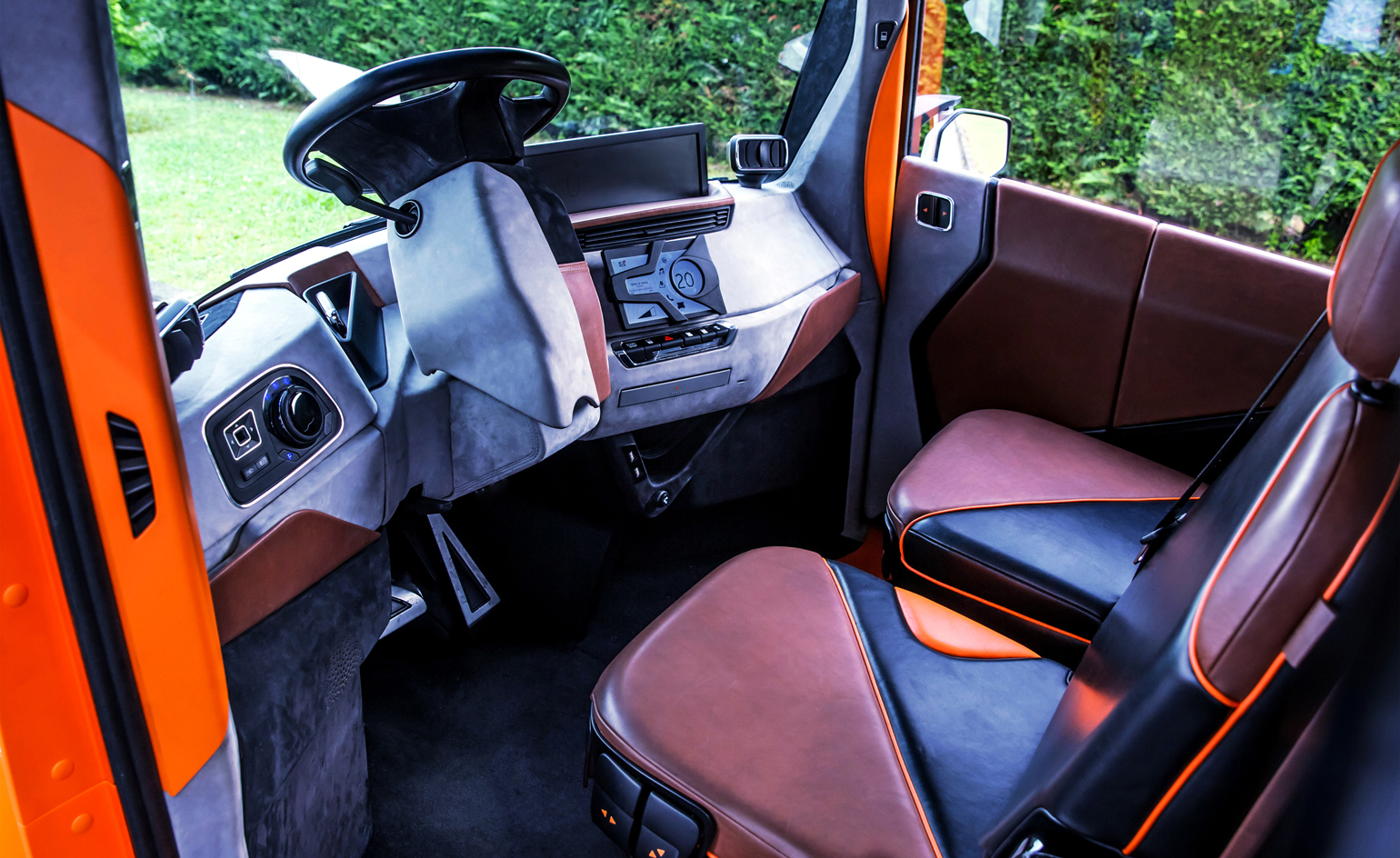
The form is unusual too – almost cubist visually and conceptually. ‘We knew a typical holistic design approach would mean sketching a flying saucer,’ mocks Bangle. For him though it was crucial for REDS to be understood as a car, which raised the question of how to explore a new language in the age of electrification. Bangle offers this explanation: ‘We created layers or “texts” of design-meaning, then superimposed the layers so you cannot read the car as a totality. Instead of typical automotive form-play,’ he continues, ‘we used contrasting graphics to emphasis this – a trick that also gives back physical space to the people inside.’
As a result, the first perception of REDS is that of a little car which, viewed from the side, resembles a child’s drawing with its tall two-volume shape and sloping rear. ‘It is very charming and disarming,’ notes the designer, ‘the next layer is the bright colour graphic spilling out from around the doors – like a welcome carpet shouting that the interior cannot wait to greet you.’
The final chapter, according to Bangle, is the large glass, the ‘space for living’, sandwiched between it all. ‘It has a reversed slope windshield, needed to spin around the driver’s seat, and a super long roof to keep the interior cool in its own shade.’ The combined effect, he feels, offers a more intriguing and inviting totality than a single sculptural object could ever accomplish.
Bangle is direct when he voices his concern at the lack of real challenges to the visual language of conventional cars by mainstream manufacturers in this new age of electric, and soon, autonomous cars. ‘I feel car designers are running out of – or won’t accept – new influences and references. That it has almost been reduced to a set of exaggerations of car design tropes – jokes for the insiders,’ he says gravely before adding, ‘the question is if design deals with facts, how do we as car designers create in the age of post factual truth? We need a fourth age of car design – a concept for which I am indebted to many discussions with my son Derek who is studying design history.’
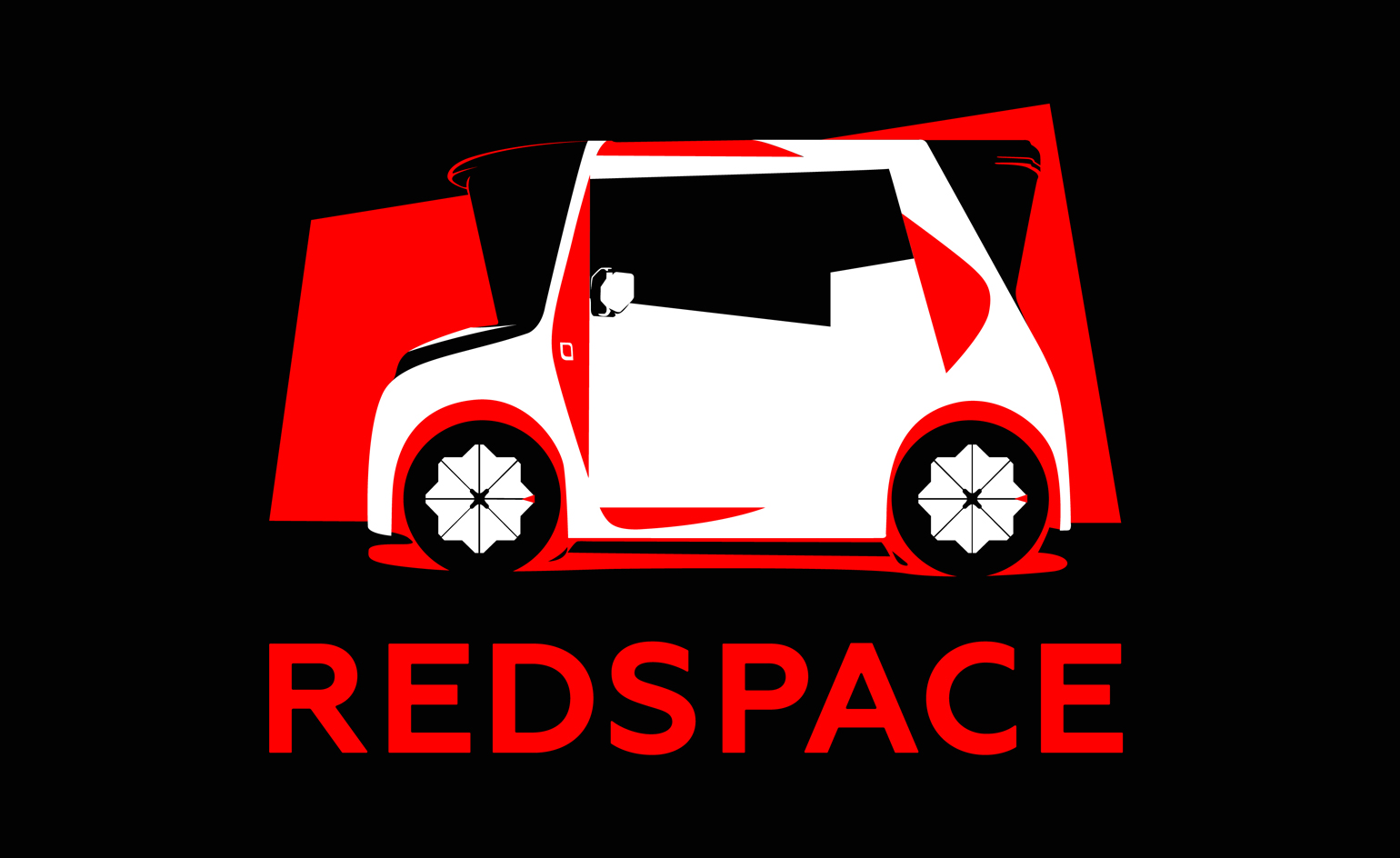
Bangle identifies the first age from around 1880s when cars were made to convey a sense of stature. Then in the 1930s he says they began to reflect the influence of external elements, evolving into flowing lines and sculptural shapes. Bangle’s third age, which started in the 1980s and continues today, is one that sees the car defined by the dogmas of vehicle design and branding.
Bangle’s fourth age is aimed at the now, ‘a time of change and ambiguity and fear, not just of the future but of the past,’ he says. This new age will see the car referencing its own internal self rather than history – or as Bangle puts it ‘the uniqueness and contextual specialness that gives it identity’. This sense of freedom allows the car to reflect its own purpose, to be itself, and be of service to its user, who may also change according to the function of the car. This is where he sees REDS positioned.
In the meantime, the CBA team are having a great deal of fun playing around Piedmont with their REDS prototype. ‘It has incredible range for a car with a shape like this,’ Bangle enthuses. Initially the car will be aimed at Chinese megacities, but he sees the potential to broaden the project to suit other markets, including Europe.
Asked what he feels is the key message with REDS, Bangle replies: ‘I’d have to say it is a breakthrough in car design that allows a completely new kind of automobile to exist. It is about the “why”. It offers an intellectual discourse, not a collection of tired design dogmas. For car design to be innovative and offer better solutions for the world, we have to be courageous.
INFORMATION
For more information, visit the Project Redspace website
Receive our daily digest of inspiration, escapism and design stories from around the world direct to your inbox.
A writer and editor based in London, Nargess contributes to various international publications on all aspects of culture. She is editorial director on Voices, a US publication on wine, and has authored a few lifestyle books, including The Life Negroni.
-
 The new Tudor Ranger watches master perfectly executed simplicity
The new Tudor Ranger watches master perfectly executed simplicityThe Tudor Ranger watches look back to the 1960s for a clean and legible design
-
 This late-night hangout brings back 1970s glam to LA’s Sunset Boulevard
This late-night hangout brings back 1970s glam to LA’s Sunset BoulevardGalerie On Sunset is primed for strong drinks, shared plates, live music, and long nights
-
 How Memphis developed from an informal gathering of restless creatives into one of design's most influential movements
How Memphis developed from an informal gathering of restless creatives into one of design's most influential movementsEverything you want to know about Memphis Design, from its history to its leading figures to the pieces to know (and buy)
-
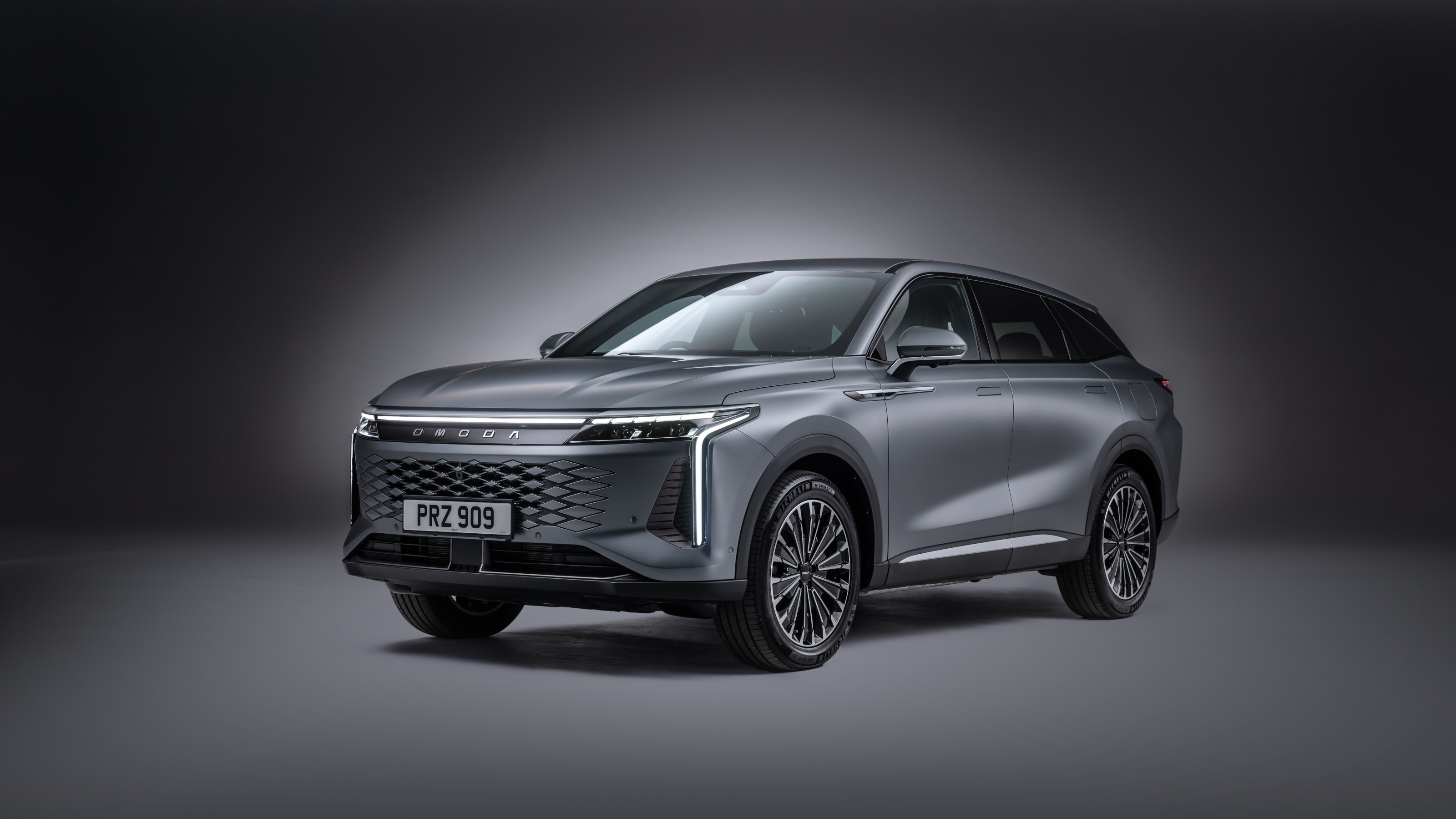 The newest car brand to arrive from China, Omoda is aimed squarely at the luxury sector
The newest car brand to arrive from China, Omoda is aimed squarely at the luxury sectorThe Omoda 9 brings Chery’s Super Hybrid System to Europe’s roads, a smart but affordable luxury SUV with a long-legged range and a very high specification
-
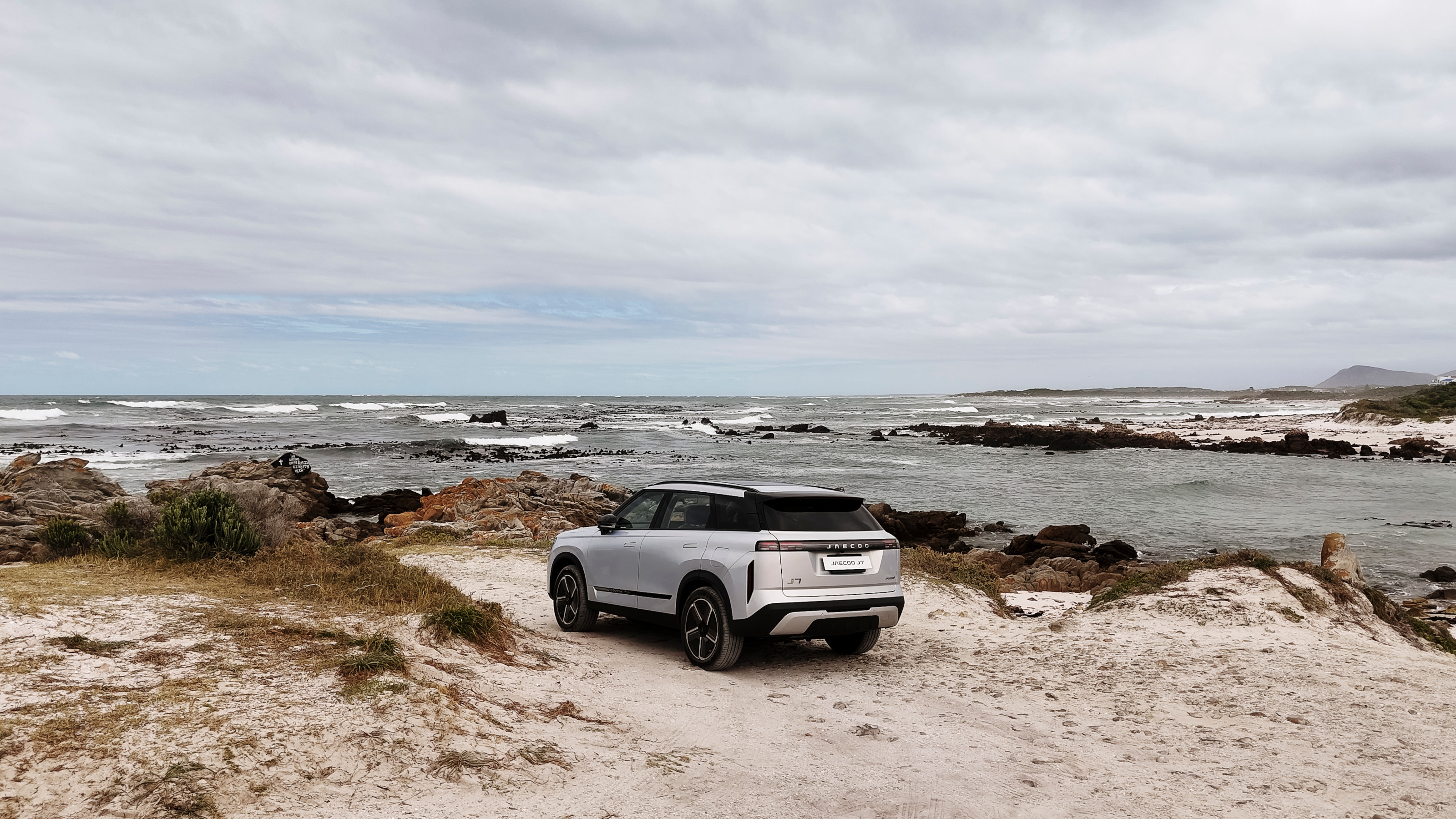 We take the new Jaecoo 7 SUV along South Africa’s famous Garden Route
We take the new Jaecoo 7 SUV along South Africa’s famous Garden RouteEndurance, efficiency and economic soft power, Wallpaper* experiences China’s new SUV challenger on a gentle safari across South Africa
-
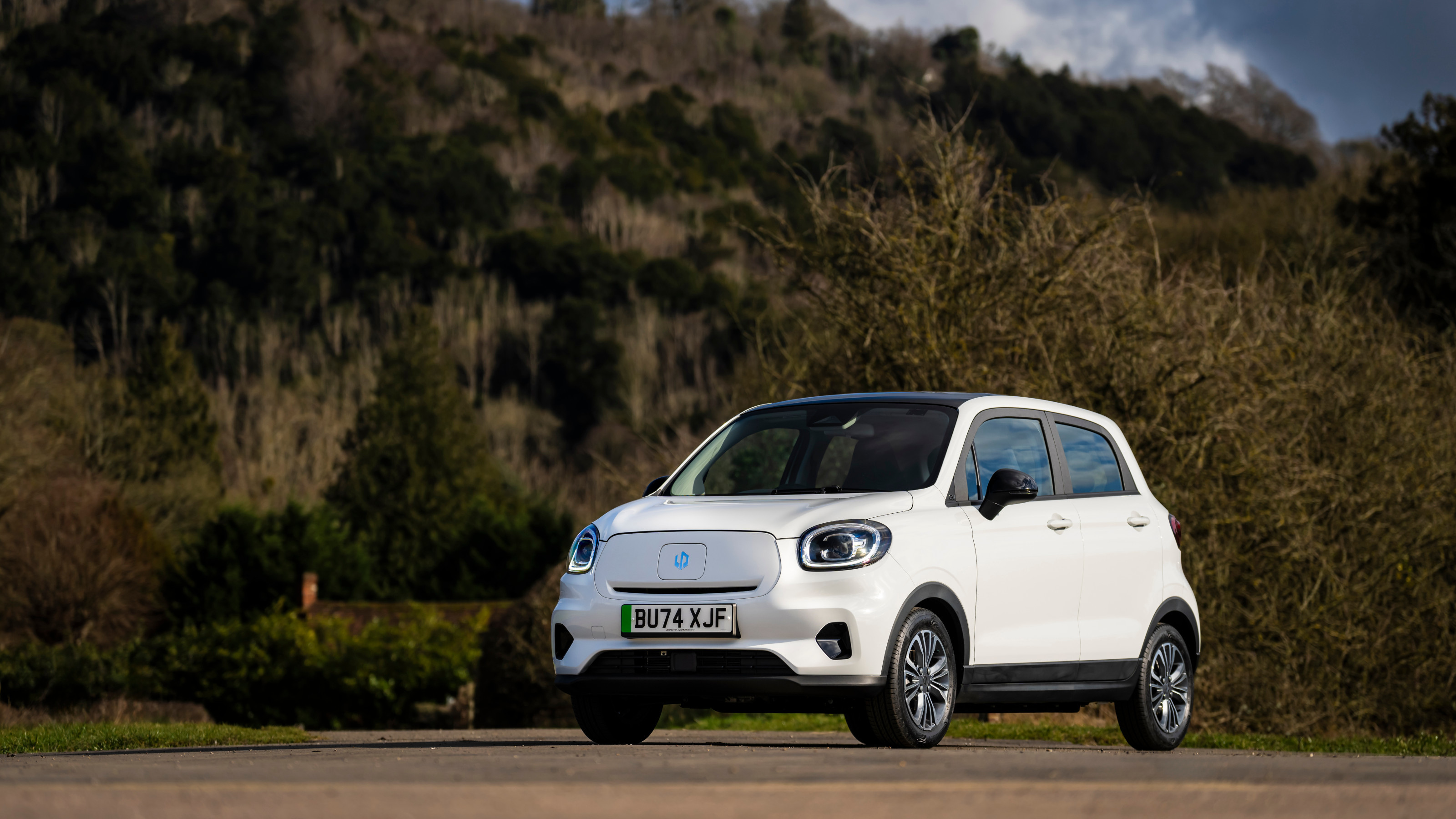 China’s Leapmotor pounces on the European car market with its T03 city car and C10 SUV
China’s Leapmotor pounces on the European car market with its T03 city car and C10 SUVLeapmotor’s tiny electric city car could be just the tonic for cramped urban Europe. We sample the T03 and its new sibling, the fully loaded C10 SUV, to see if the company’s value proposition stacks up
-
 Taking off? XPeng Aero HT promises world’s first all-electric ‘Land Aircraft Carrier’
Taking off? XPeng Aero HT promises world’s first all-electric ‘Land Aircraft Carrier’Six wheels, six rotors, four seats and an aesthetic that bests even the boldest futurologist – Chinese manufacturer XPeng looks to the skies with this truck and its onboard flying machine
-
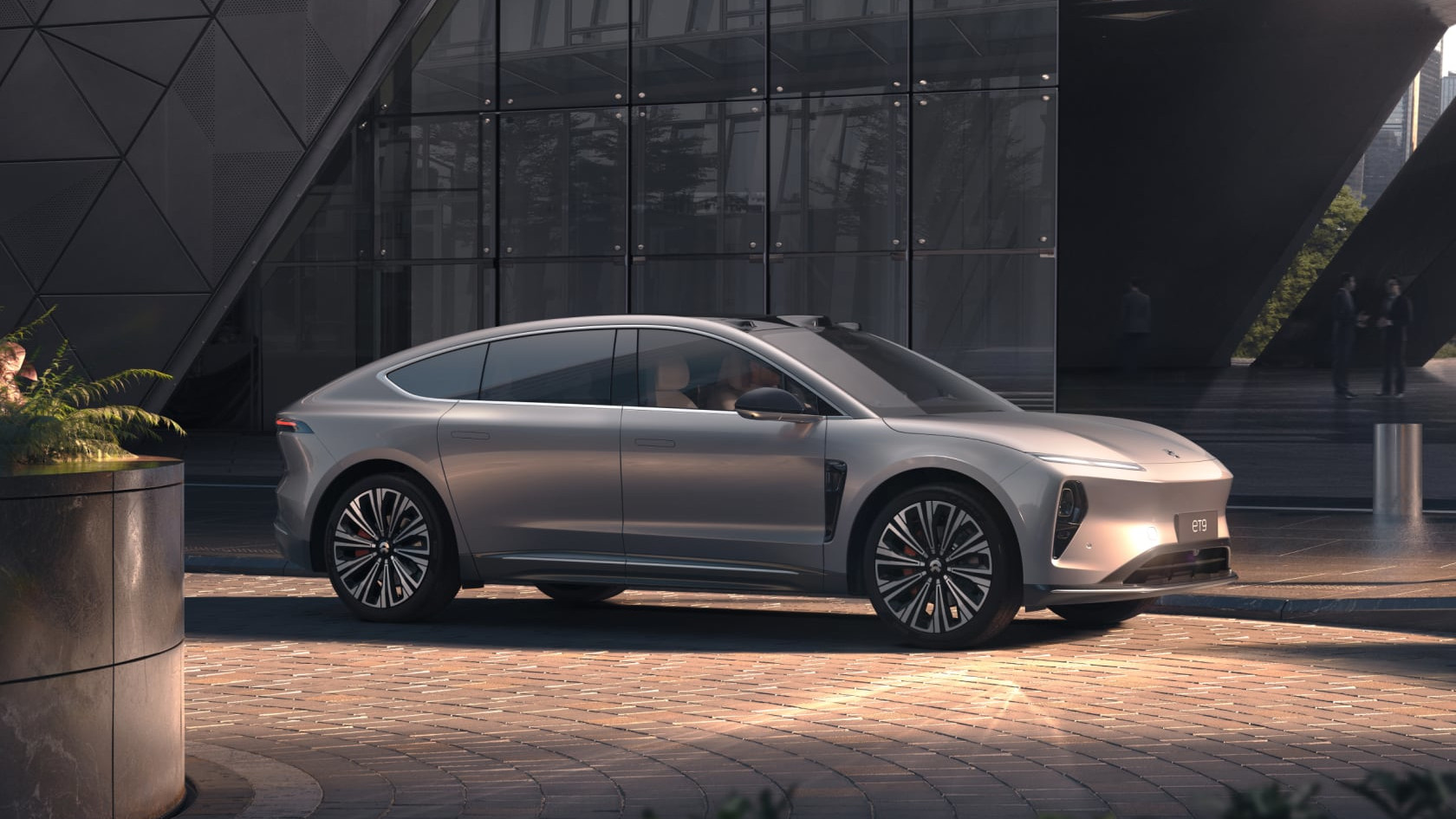 The innovations and eccentricities coming soon from the Chinese auto industry
The innovations and eccentricities coming soon from the Chinese auto industryChina accounts for 75 per cent of new EVs, and new models arrive on a weekly basis. Here are some of the key brands looking to reshape the automotive landscape in the years to come
-
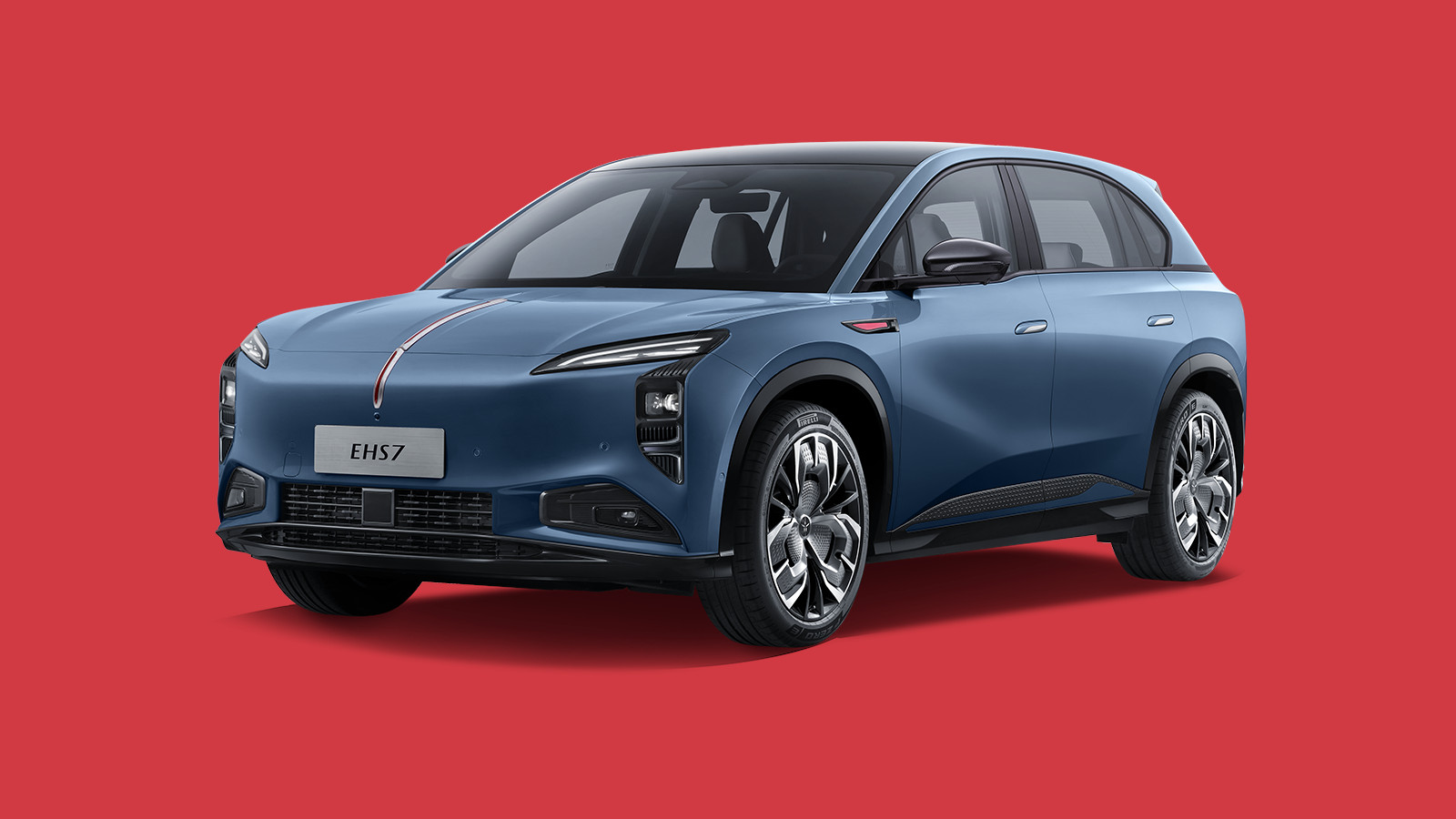 Hongqi’s Giles Taylor on the Chinese car maker's imminent arrival in the UK
Hongqi’s Giles Taylor on the Chinese car maker's imminent arrival in the UKHongqi makes China's state limousines. By 2026, it'll have a pair of premium EVs on UK roads. Giles Taylor, its VP of design, tells us about its design approach, and ambition in Europe
-
 Volvo EM90 is the brand’s all-electric first foray into the Multi-Purpose Vehicle
Volvo EM90 is the brand’s all-electric first foray into the Multi-Purpose VehicleSo far only China will get the new Volvo EM90 MPV; we think it has global potential
-
 Peugeot’s sparky 308 gets hybrid power and handsome lines
Peugeot’s sparky 308 gets hybrid power and handsome linesThe Peugeot 308 proves that mass-market design needn’t be dull, blending hybrid power with sharp lines and excellent detailing